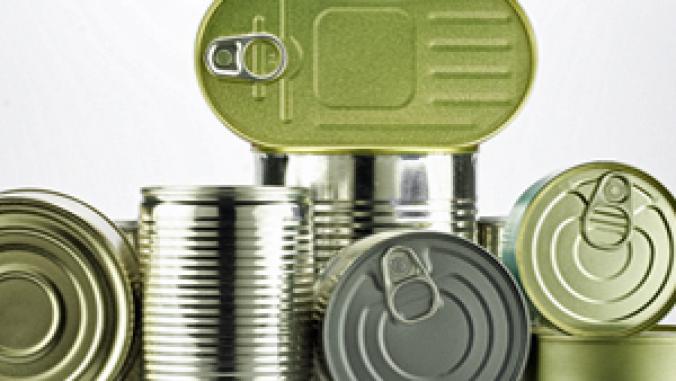Kaiser Gets Green Infusion with Safer IV Equipment
<p>Kaiser Permanente is converting to IV bags that are free of the industrial chemicals PVC and DEHP and DEHP-free tubing in the latest major move to green its medical supply chain.</p>

Kaiser Permanente is shifting to IV equipment that is free of the industrial chemicals PVC and DEHP in the latest move by the health care giant to green its medical supply chain.
The change in purchasing practices, announced this morning, means that Kaiser will no longer buy intravenous solution bags -- the ubiquitous pouches that hold medicine and other fluids for patients -- that are made with polyvinyl chloride and di-2-ethyl hexyl phthalate, substances commonly used in plastics. Kaiser also is turning to DEHP-free IV tubing.
The switch will affect almost 100 tons of medical supplies annually: Kaiser buys 4.9 million IV tubing sets and 9.2 million IV bags a year.
PVC and DEHP are widely found in medical products, and their use is the subject of scrutiny for health and environmental reasons. PVC releases dioxin, a carcinogen, during the manufacturing process and when it is incinerated. DEHP, a plasticizer typically used to make PVC more flexible, has been found to be a reproductive toxicant and an endocrine disruptor in animals, giving rise to growing concerns about its effects on humans.
"The reason we have very aggressive environmental stewardship at Kaiser Permanente is that we want to reduce and eliminate environmental contributors to disease," said Kathy Gerwig, who is Kaiser Permanente's vice president for employee safety, health and wellness and its environmental stewardship officer. [See Gerwig's post for GreenBiz on greening the medical supply chain.]
Based on that principle, Kaiser’s sustainability strategy includes greener building, buying, energy and eating initiatives. Kaiser leverages its size – the health care provider serves 8.9 million members in nine states and the District of Columbia -- to increase the reach and impact of those programs.
The organization's sheer numbers also lend greater weight to efforts to make its medical supply chain, and that of the health care industry, more environmentally responsible. When your organization buys supplies by the ton and orders millions of items, your calls for more eco-friendly and economically viable alternatives tend to get attention.
Kaiser first developed an environmental purchasing policy to set guidelines for spending, which comes to some $14 billion a year. Then it developed a sustainability scorecard for the $1 billion in medical supplies and products that it buys each year. The scorecard, launched in 2010, requires Kaiser medical suppliers and prospective vendors to provide environmental data on their goods. That information forms the basis for ratings Kaiser considers -- along with product performance, effectiveness and cost -- when choosing medical supplies.
Last year, Practice Greenhealth, Kaiser's frequent partner in industry efforts, brought the concept to a broader audience by starting the Greening the Supply Chain Initiative. Practice Greenhealth followed up by releasing its Standardized Environmental Questions for Medical Products in the fall. The tool, which was greatly informed by Kaiser's sustainability scorecard, was endorsed by five major healthcare purchasing organizations, which represent about $135 billion in buying power.
As to Kaiser's latest supply chain move, the organization isn't the first to eliminate PVC and DEHP from IV equipment. Catholic Healthcare West stopped buying IV bags and tubes with the chemicals about seven years ago. However, Kaiser is the largest to do so, according to Gerwig and Robert Gotto, Kaiser Permanente's executive director of national facilities services procurement.
While size has its advantages when it comes to influence, it also requires more coordination to make a major change in the supply chain.
Finding sources of high-performing goods, with a smaller environmental footprint, in the volume that Kaiser needs, and at cost-efficient prices can be a challenge, Gotto acknowledged. Transitioning from one type of product to another also takes planning and time. "We have to make sure the shelves are never bare," he said.
However, it can be done, Gotto said. Kaiser expects to save about $5 million a year using the new IV equipment.
Kaiser has targeted 10 top priorities in its sustainable supply chain campaign. Here is the list:
1. IV tubing and bags
2. Dialysis tubing
3. High-level disinfectants
4. Fixatives
5. Solvents
6. Enzymatic detergents
7. Cleaning chemicals
8. Casework
9. Paint
10. Resilient flooring
In addition to finding greener alternatives for IV equipment, Kaiser has identified environmentally friendly options for high-level disinfectants, cleaning chemicals and resilient flooring, a spokeswoman said. It plans to address dialysis tubing, solvents, enzymatic detergents, casework and paint this year. In 2013, Kaiser plans to tackle fixatives.
Other results of the sustainable scorecard process include use of rigid endoscopes that are sterilized with steam instead of chemicals, PVC-free carpet, and PVC- and DEHP-free infusion pumps that are electronically controlled by patients (equipment called patient-controlled analgesia sets). Kaiser also has devised sustainability criteria for fabrics.
Photo of nurse adjusting IV via Shutterstock.com





